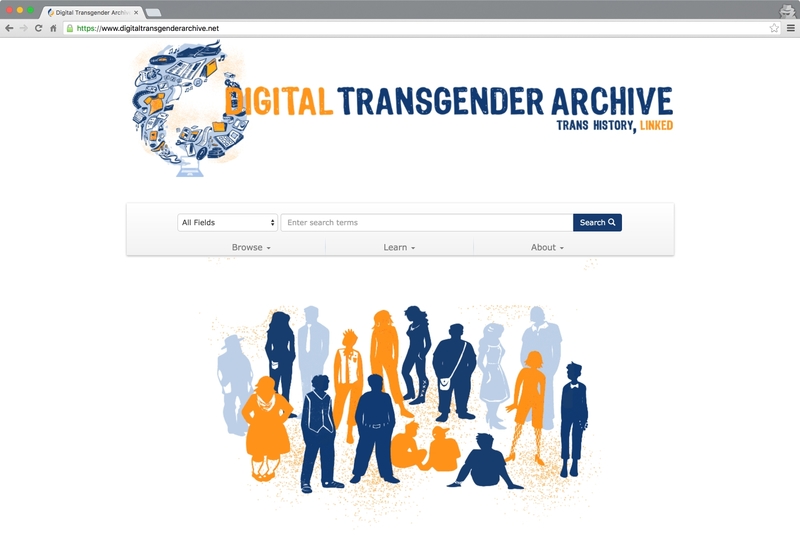Digital Transgender Archive
Overview
Land Acknowledgment
Though we are a digital project, we regularly work and gather in Boston, Massachusetts on the sovereign territory of the Wampanoag and the Massachusett Peoples. We recognize these communities as part of our commitment to working to dismantle the historic and ongoing erasures of Indigenous people and the widespread impacts of settler colonialism.
Overview
The purpose of the Digital Transgender Archive (DTA) is to increase the accessibility of transgender history by providing an online hub for digitized historical materials, born-digital materials, and information on archival holdings throughout the world. Based in Boston, Massachusetts at Northeastern University, the DTA is an international collaboration among dozens of colleges, universities, nonprofit organizations, public libraries, and private collections. By digitally localizing a wide range of trans-related materials, the DTA expands access to trans history for academics and independent researchers alike in order to foster education and dialog concerning trans history.
The DTA uses the term transgender to refer to a broad and inclusive range of non-normative gender practices. We treat transgender as a practice rather than an identity category in order to bring together a trans-historical and trans-cultural collection of materials related to trans-ing gender. We collect materials from anywhere in the world with a focus on materials created before the year 2000.
History & Purpose
The idea for the DTA first began to take root when K.J. Rawson met Nick Matte at the TransSomatechnics conference held at Simon Fraser University in the spring of 2008. Through a series of conversations, K.J. realized in talking to Nick that their challenges researching transgender history were representative of systematic barriers, which K.J. began to develop a plan to address with the DTA.
The first of these challenges is that trans-related historical materials are widely dispersed throughout the world in a number of different repositories ranging from university-based collections to non-profit and grassroots archives. Most archives that have significant holdings in this area have no official ties and do not collaborate regularly. The amount of materials in these collections that are processed and made available to researchers varies widely and some archives do not have the most basic, collection-level information about their holdings available to researchers. These factors make it difficult to know which archives collect trans materials, what materials these archives have, and how holdings at various archives relate to one another.
A second challenge of research on trans phenomena is rooted in language. While transgender is now widely used in contemporary U.S. culture, the term is not only culturally specific, but it is also only a few decades old. In an archival context, this very recent emergence of the term means that any materials processed before the 1990's would not include the term in descriptive information. Throughout the world, many other terms are used to describe trans-related practices, often in ways that are both temporally and contextually foreign to a U.S.-based understanding of transgender. Without a key term to cohere gender non-conforming practices, researchers are forced to attempt alternative, and often unsuccessful, ways of finding relevant materials.
A third challenge is that very few primary source materials are available online and even those are difficult to discover. Moreover, with some archives having no online presence and others offering only limited descriptions of their holdings, researchers have few ways of learning where particular transgender materials are housed.
In order to address these significant barriers to the accessibility of trans history, the DTA virtually merges disparate archival collections, digital materials, and independent projects with a single search engine. With rich primary source materials and powerful search tools, the DTA offers a generative point of entry into the expansive world of trans history.
It’s important to note that the DTA uses transgender in a broad and inclusive sense, not simply as a fixed identity term. Though the term transgender is already widely used as a broad identity category in the U.S. (though not without controversy), the term does not adequately capture the gender diversity that exists around the world (see Global Terms for more on this). Consequently, we use transgender and trans as a framework for collecting materials, as a point of departure, so that we can work toward developing deeper understandings of practices of trans-ing gender on a global scale.
Work on the DTA began in earnest in 2013 and the project was publicly launched in January of 2016. The project has been made possible thanks to the generous support of Northeastern University, the College of the Holy Cross, the Digital Commonwealth, and the American Council of Learned Societies (which awarded K.J. a Digital Innovation Fellowship for the 2015–2016 academic year and the project a Digital Extension Grant for 2017–2018), and the Council on Library and Information Resources (which awarded the project a Digitizing Hidden Special Collections & Archives Grant for 2022–2025).
If you would like to learn more about the project, please Contact Us!

